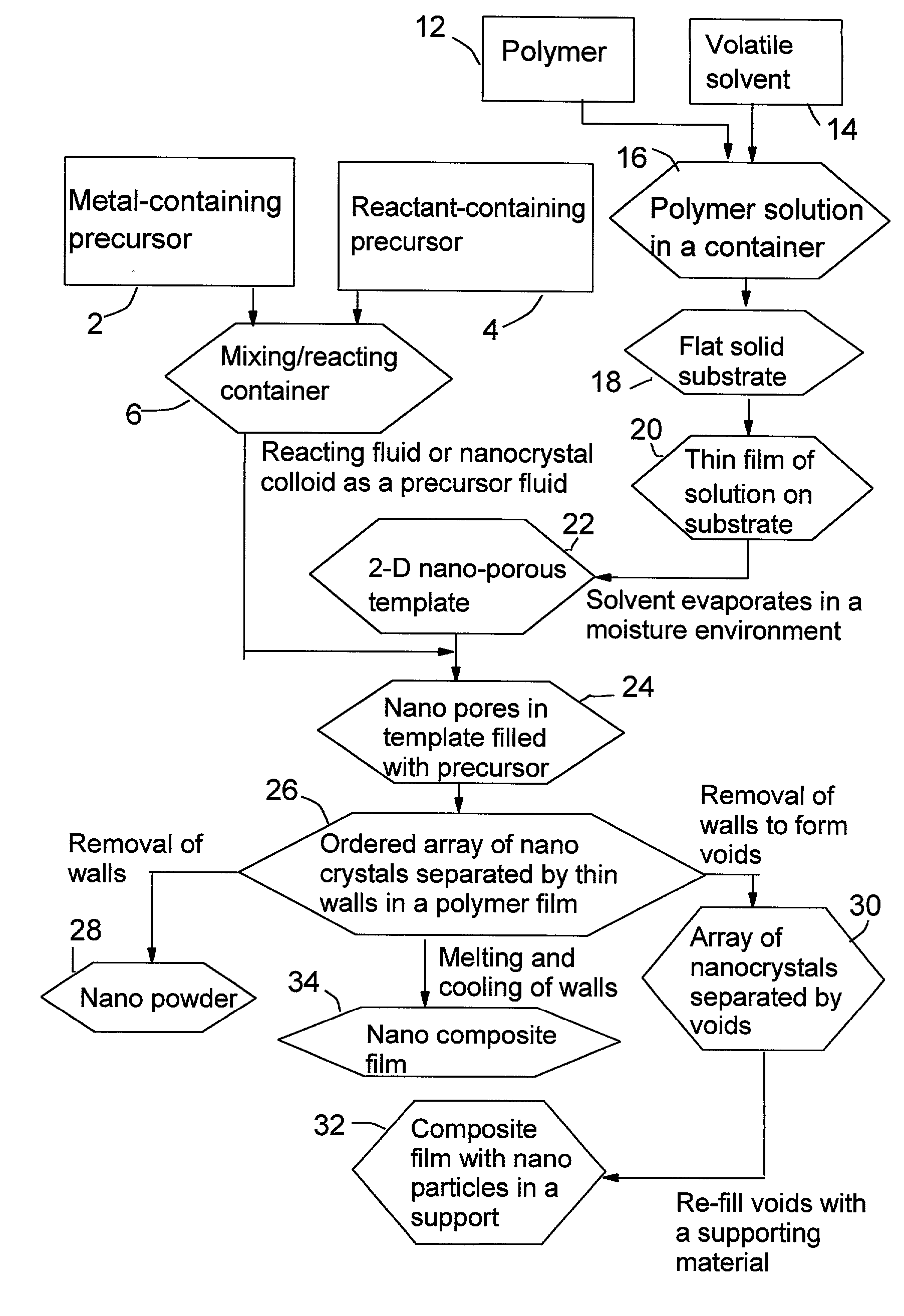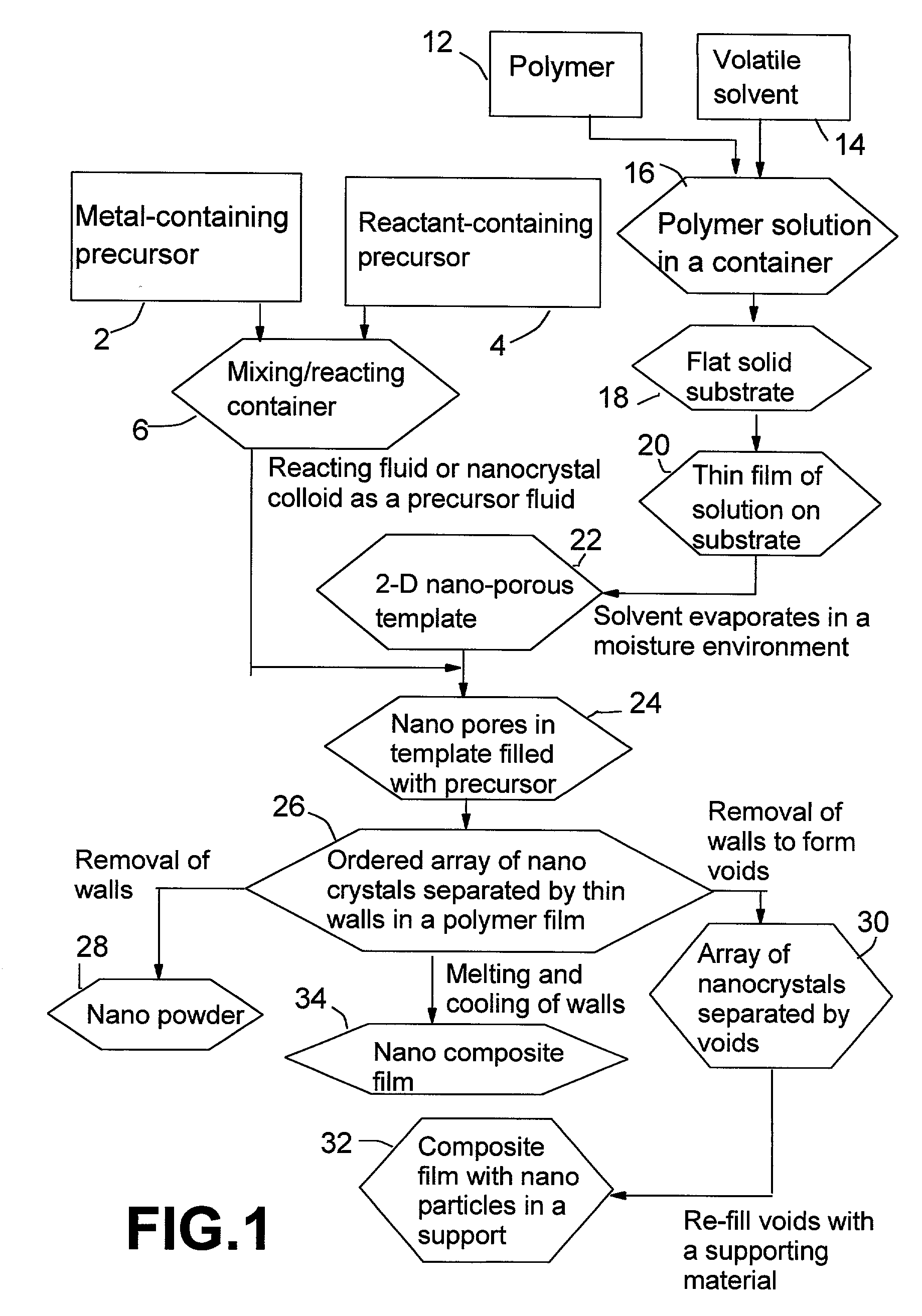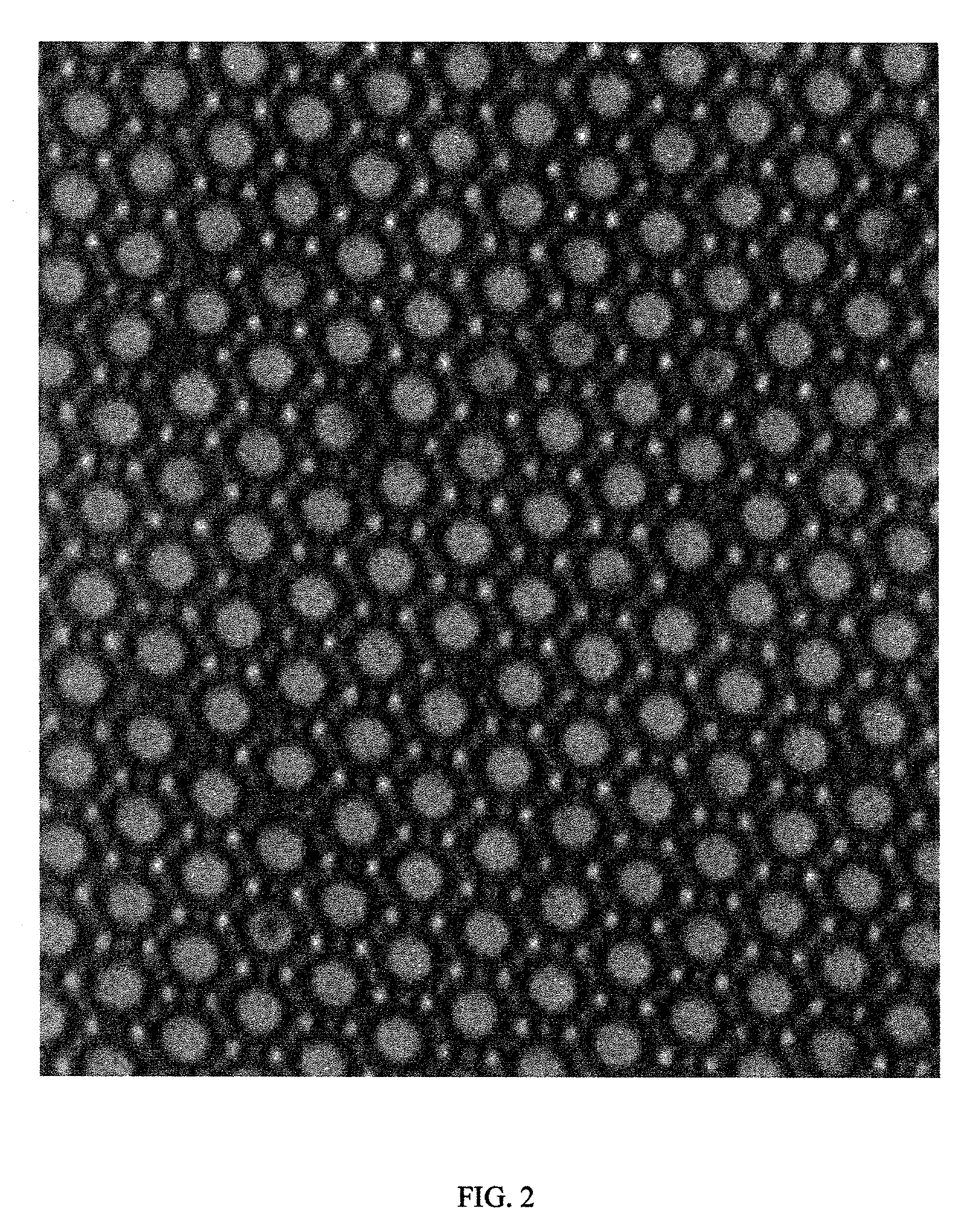Method of producing quantum-dot powder and film via templating by a 2-d ordered array of air bubbles in a polymer
a polymer and quantum dots technology, applied in the field of nanometer-sized solid particles and composite film materials, can solve the problems of micron-sized particles, poor luminescence properties of crystallites, and change of light emitted by devices
- Summary
- Abstract
- Description
- Claims
- Application Information
AI Technical Summary
Benefits of technology
Problems solved by technology
Method used
Image
Examples
example 2
[0088] The TOP-based reacting solution prepared in EXAMPLE 1 was mixed with liquified (n-C.sub.8H.sub.17).sub.3 PO (tri-n-octylphosphine oxide or "TOPO") solvent maintained at the desired reaction temperature from 54.degree. C. to about 125.degree. C. under N.sub.2. The solution mixture was introduced into the nano pores in a template to generate TOPO-capped CdTe particles. After a nominal reaction period of from about one minute to about 60 minutes, in inverse relationship to the reaction temperature, TOPO-capped cadmium telluride nano particles were precipitated. The resulting film with a 2-D ordered array of CdTe crystals dispersed in a polystyrene matrix was washed with methanol. The nano particles then were isolated and collected by dissolving the polymer in benzene.
example 3
[0089] CdS nano particles were prepared by reacting CdI.sub.2 in methanol with Na.sub.2S in methanol at reduced temperature under inert atmosphere as follows:
CdI.sub.2+Na.sub.2S (in MeOH)nano-CdS+2 NaI (soluble in MeOH)
[0090] The by-product of the reaction (i.e., NaI) is soluble in the methanol solvent while the product nano particles of CdS are not. During the chemical reaction, NaI salt is removed from the product mixture with the remaining CdS nano particles forming a stable methanolic colloid. The methanol colloid was poured into the pores of a nano-porous polystyrene template on a glass surface. Methanol is then allowed to vaporize, leaving behind the CdS nano particles trapped inside the nano pores. The polystyrene walls were melted at 130.degree. C. with the composite film pressed between two glass slips, which was followed by re-solidifying the polymer to consolidate the film.
example 4
[0091] A solution was prepared by dissolving a 0.002 mole of cadmium acetate in 200 ml of ethanol at room temperature, which is followed by adding 0.002 mole of 3-aminopropyltriethoxysilane. Then, 0.005 mole of H.sub.2S were added to the mixture and stirred at room temperature for 10 minutes. The solution was poured onto a nano-porous polymer film wherein nano-sized CdS clusters were precipitated. The liquid solvent was vaporized to produce the nano crystals entrapped in the nano pores.
PUM
| Property | Measurement | Unit |
|---|---|---|
| Nanoscale particle size | aaaaa | aaaaa |
| Nanoscale particle size | aaaaa | aaaaa |
| Selectivity | aaaaa | aaaaa |
Abstract
Description
Claims
Application Information
 Login to View More
Login to View More - R&D
- Intellectual Property
- Life Sciences
- Materials
- Tech Scout
- Unparalleled Data Quality
- Higher Quality Content
- 60% Fewer Hallucinations
Browse by: Latest US Patents, China's latest patents, Technical Efficacy Thesaurus, Application Domain, Technology Topic, Popular Technical Reports.
© 2025 PatSnap. All rights reserved.Legal|Privacy policy|Modern Slavery Act Transparency Statement|Sitemap|About US| Contact US: help@patsnap.com



